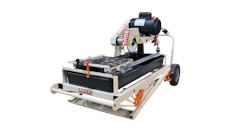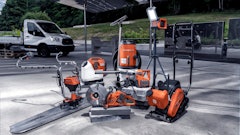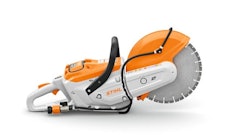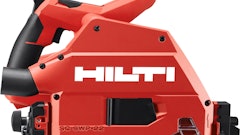Finding a high-quality vacuum, sizing it right for the amount of dust you need to capture and using it correctly (namely avoiding filter clogging) will keep harmful dust out of the air on your jobsite. “One thing contractors might not realize is by the time you start to see dust in the air because your vacuum is no longer capturing it, it’s too late. You’ve been breathing deadly dust,” says Chris McCutchen of CDCLarue Industries, Inc. “The human eye doesn’t see dust particles until they are 40-50 micros in size; silica dust is three microns and above.”
There is no concrete industry standard for choosing a vacuum to handle concrete dust. One guideline contractors might look to when choosing a vacuum system is the EPA’s Lead Renovation, Repair and Paining rule. “[Lead RRP compliance] is a way to differentiate a shop vac from a dust extractor,” says Jeff Beck with DeWalt. “It’s seen in the industry as a benchmark."
The EPA RRP defines a vacuum this way: "HEPA vacuum means a vacuum cleaner which has been designed with a high-efficiency particulate air (HEPA) filter as the last filtration stage. A HEPA filter is a filter that is capable of capturing particles of 0.3 microns with 99.97% efficiency. The vacuum cleaner must be designed so that all the air drawn into the machine is expelled through the HEPA filter with none of the air leaking past it.”
Other guidelines to following when choosing a vacuum for concrete dust containment include:
- Size. The size of your vacuum will depend on the type of equipment you will use with it – walk-behind concrete grinder, hammer drill, angle grinder, etc. Look for lift and CFM that fits the job and equipment.
- Filtration. Double filtration is important. A HEPA filter as the last stage of filtration will be at least 99.97 efficient at removing fine dust particles from the air. Your vacuum also should have earlier stages of filtration, which will help extend the life of the more expensive HEPA filter.
- Filter cleaning. In its document “Controlling Silica Exposures in Construction,” OSHA recommends a vacuum with a back-pulse filter cleaning cycle. It states, “Such auto-cleaning mechanisms will reduce the time required for vacuum maintenance and improve the overall efficiency of the dust collection system. If the vacuum does not have an auto-cleaning mechanism, the employee can periodically turn the vacuum cleaner on and off. This allows the bag to collapse and causes the prefilter cake to dislodge from the filter.” Additionally, pre-separator products are available on the market that lessen the downtime contractor’s might experience with technologies other than the back-pulse filters.




























